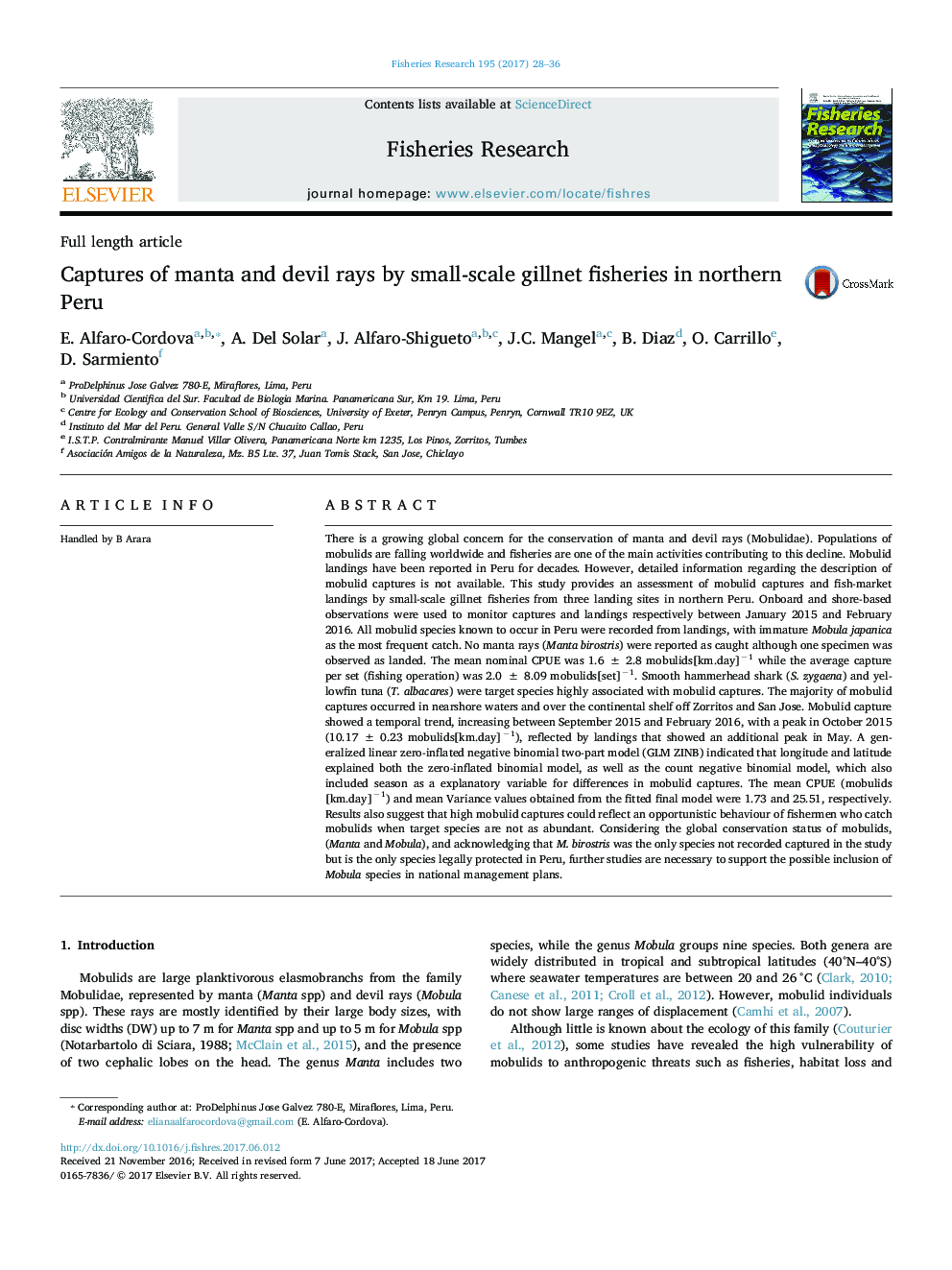| کد مقاله | کد نشریه | سال انتشار | مقاله انگلیسی | نسخه تمام متن |
|---|---|---|---|---|
| 5765501 | 1626775 | 2017 | 9 صفحه PDF | دانلود رایگان |
عنوان انگلیسی مقاله ISI
Captures of manta and devil rays by small-scale gillnet fisheries in northern Peru
ترجمه فارسی عنوان
ضایعات مانتا و شیطان در مقیاس کوچک ماهیگیری در شمال پرو
دانلود مقاله + سفارش ترجمه
دانلود مقاله ISI انگلیسی
رایگان برای ایرانیان
موضوعات مرتبط
علوم زیستی و بیوفناوری
علوم کشاورزی و بیولوژیک
علوم آبزیان
چکیده انگلیسی
There is a growing global concern for the conservation of manta and devil rays (Mobulidae). Populations of mobulids are falling worldwide and fisheries are one of the main activities contributing to this decline. Mobulid landings have been reported in Peru for decades. However, detailed information regarding the description of mobulid captures is not available. This study provides an assessment of mobulid captures and fish-market landings by small-scale gillnet fisheries from three landing sites in northern Peru. Onboard and shore-based observations were used to monitor captures and landings respectively between January 2015 and February 2016. All mobulid species known to occur in Peru were recorded from landings, with immature Mobula japanica as the most frequent catch. No manta rays (Manta birostris) were reported as caught although one specimen was observed as landed. The mean nominal CPUE was 1.6 ± 2.8 mobulids[km.day]â1 while the average capture per set (fishing operation) was 2.0 ± 8.09 mobulids[set]â1. Smooth hammerhead shark (S. zygaena) and yellowfin tuna (T. albacares) were target species highly associated with mobulid captures. The majority of mobulid captures occurred in nearshore waters and over the continental shelf off Zorritos and San Jose. Mobulid capture showed a temporal trend, increasing between September 2015 and February 2016, with a peak in October 2015 (10.17 ± 0.23 mobulids[km.day]â1), reflected by landings that showed an additional peak in May. A generalized linear zero-inflated negative binomial two-part model (GLM ZINB) indicated that longitude and latitude explained both the zero-inflated binomial model, as well as the count negative binomial model, which also included season as a explanatory variable for differences in mobulid captures. The mean CPUE (mobulids[km.day]â1) and mean Variance values obtained from the fitted final model were 1.73 and 25.51, respectively. Results also suggest that high mobulid captures could reflect an opportunistic behaviour of fishermen who catch mobulids when target species are not as abundant. Considering the global conservation status of mobulids, (Manta and Mobula), and acknowledging that M. birostris was the only species not recorded captured in the study but is the only species legally protected in Peru, further studies are necessary to support the possible inclusion of Mobula species in national management plans.
ناشر
Database: Elsevier - ScienceDirect (ساینس دایرکت)
Journal: Fisheries Research - Volume 195, November 2017, Pages 28-36
Journal: Fisheries Research - Volume 195, November 2017, Pages 28-36
نویسندگان
E. Alfaro-Cordova, A. Del Solar, J. Alfaro-Shigueto, J.C. Mangel, B. Diaz, O. Carrillo, D. Sarmiento,
